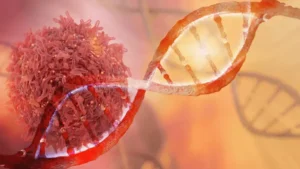
At this stage, it becomes crucial to address the risky behaviors and provide individuals with appropriate treatment and support. It is important to break the cycle of addiction and seek professional help. Understanding the stages of addiction is essential in recognizing and addressing the challenges individuals face throughout their journey. Addiction does not develop overnight but progresses through a series of distinct stages.
The 3 Stages of the Addiction Cycle
Prolonged substance use can lead to alterations in neurotransmitter levels, impacting mood, motivation, and decision-making processes. These changes make it challenging for individuals to quit or control their substance use. For individuals in the first two stages of initial use and abuse, outpatient treatment and behavioral health counseling may be all that’s needed to get back on track.
The Cycle of Addiction: 6 Stages
This reduces the high that the person feels compared to the high they felt when first taking the drug—an effect known as tolerance. These brain adaptations often lead to the person becoming less and less able to derive pleasure from other things they once enjoyed, like food, sex, or social activities. Most drugs affect the brain's "reward circuit," causing euphoria as well as flooding it with the chemical messenger dopamine.
At What Points in the Addiction Cycle Is Treatment Needed?
Depending on the person and their particular addiction, each phase may take a short or long time to develop. However, even though each phase may differ in its duration, they generally progress in a repetitive pattern until some form of treatment takes place to intervene and alleviate the addiction. Using alcohol during adolescence (from preteens to mid-20s) may affect brain development, making it more likely that they will be diagnosed with AUD later in life. However, most people with AUD—no matter their age or the severity of their alcohol problems—can benefit from treatment with behavioral health therapies, medications, or both.
- Some scientific literature describes addiction as the compulsion to use substances or participate in addictive behaviors, such as gambling, eating, and working, even when doing so causes harm.
- The trigger could also be anchored on some mental need, such as those who take stimulants because they have to review for a test, or for someone who needs to be awake and alert enough to do a presentation.
Development

It is essential to be self-aware and vigilant while recovering from active drug addiction. Drug tolerance and drug intolerance are two distinct phenomena related to the body’s reaction to medications. Drug tolerance refers to a situation where the body’s response to a drug diminishes over time, which can compel the user to increase the dosage to achieve the same therapeutic effect. On the other hand, drug intolerance, often confused with drug sensitivity, occurs when an individual experiences adverse effects from a drug at therapeutic or even subtherapeutic doses. This intolerance is not due to an allergic reaction, which is a more severe immune response, but rather a lower threshold for the side effects of the drug.
- Valley Spring Recovery Center offers comprehensive addiction and mental health treatment services.
- Historically, whenever the topic of addiction or substance abuse was being discussed, the thought of drugs and alcohol addiction immediately came to mind.
- This phenomenon can happen with various substances, but it is particularly notable with alcohol and opioids.
The Complexity of Addiction

The more toxic substances a person takes, the more work it is for the liver to filter out these toxins. Get inspired, find support, and gain expert insights on your journey to recovery. It's crucial to consult with healthcare professionals or addiction specialists to determine the most appropriate treatment option based on individual needs.
OpenUp’s New Mobile App Set to Improve Mental Health Access for All
People who develop addictions may feel unable to stop using the substance or participating in an activity even if they want to because of the physiological changes addiction causes. Relapse is defined to have occurred regardless of whether the addict attempted to stop the drug themselves before seeking treatment or enrolling in a treatment center. Tolerance occurs when the brain or body of an addict has changed in response to the substance, requiring higher amounts to achieve the same effect. The https://ecosoberhouse.com/article/how-to-taper-off-alcohol/ stages of the addiction cycle are based on research from the Substance Abuse and Mental Health Services Administration (SAMSHA), which identified the areas of the brain where these stages occur. Cues in a person’s daily routine or environment that have become linked with substance use can trigger uncontrollable cravings whenever the person is exposed to these cues, even if the substance itself is not available. This reflex can last a long time, even years after one’s last use of that substance.

What is the difference between drug tolerance and drug intolerance?
This final stage circles back to the intoxication stage once a person uses drugs again. Once a person becomes intent on finding drugs, the prefrontal cortex activates the brain’s choose the correct cycle of addiction ‘go system.’ This triggers a person to have a strong urge to seek out drugs. When a person experiences withdrawal, the reward system in the basal ganglia shuts off.
- First, behavioral (or process) addictions have emerged and have been recognized by the American Psychological Association.
- Relapse, which means returning to a previous condition or state of being, is a hallmark of addiction.
- Each stage of addiction involves complex interactions between brain circuits and behaviors.
- Understanding the addiction cycle is vital because it’s the pattern that keeps addiction going.
- The triggers could vary widely between physical ones, such as those who suffer from chronic pain, who later discover that their painkillers tend to create a euphoric sense in them.